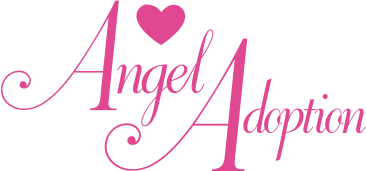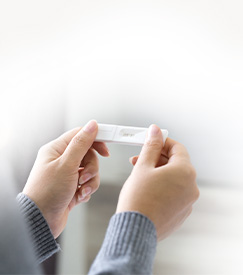
If you’re exploring adoption, you may have questions about orphanages and whether they still exist in the United States today. Many of us have seen orphanages portrayed in movies or books, which can shape our understanding of how adoption works in modern America.
The reality of “orphanage adoption” has transformed significantly over the decades, reflecting our deeper understanding of child development and improved approaches to child welfare. Let’s explore how domestic adoption has evolved and what today’s process really looks like for families considering this path.
The Historical Role of Orphanages in the U.S.
Orphanages were once common throughout America, emerging in the late 1700s and becoming widespread during the 19th and early 20th centuries. These institutions served an important purpose during times when extended family support wasn’t always available for children who had lost their parents.
By the mid-1800s, hundreds of orphanages operated across the United States under the management of religious organizations, private charities, and government agencies. The quality of these institutions varied considerably — some provided adequate care and basic education, while others faced challenges with overcrowding and limited resources.
Historical orphanages functioned quite differently from today’s adoption agencies. Children often lived in orphanages temporarily until they could return to relatives or until they were old enough to work. Some children were placed with families through informal arrangements, but these placements lacked the legal protections that modern adoptions provide.
By the early 20th century, social reformers began raising concerns about the quality of care in orphanages. Studies revealed that even in the best institutions, children often missed out on the individualized attention and emotional connections they needed for healthy development. This eventually led to significant changes in how society approached caring for children without parents.
The Shift from Institutions to Family-Based Care
The shift away from orphanages began in earnest during the 1950s and 1960s, though earlier developments had set the stage for this change. Researchers and child development specialists identified that children develop more successfully in family environments rather than institutional settings.
Research confirmed what many had suspected: children need consistent caregivers and personal attention to form healthy attachments, and children raised in institutional settings often experienced emotional and developmental challenges.
In response to this growing body of research, significant changes in policy and practice took shape:
- The Social Security Act amendments in the 1930s provided the first federal support for children in need, helping families stay together during difficult times.
- By the 1960s and 1970s, landmark federal legislation focused on preventing family separation and promoting adoption when reunification wasn’t possible.
- The foster care system expanded significantly, providing temporary family placements rather than institutional care.
- Adoption agencies developed more comprehensive practices focused on the best interests of the child.
This transition happened gradually over several decades. By the 1980s, the large-scale orphanages that had once been common across America had largely disappeared, replaced by foster care networks and more specialized residential programs for children with specific needs.
Do Orphanages Still Exist Today?
The short answer is no. Traditional orphanages, as they existed historically, no longer operate in the United States. The term “orphanage” generally refers to large institutions housing many children without parents—a model that has been almost entirely phased out in America.
Today, children who cannot remain with their birth families typically enter the foster care system, where the goal is placement in a family environment. Even when immediate placement with a foster family isn’t possible, modern alternatives look very different from historical orphanages.
What exists instead of orphanages in modern America?
- Group Homes and Residential Treatment Centers: These smaller facilities typically house children with specific behavioral or medical needs that make immediate foster placement challenging. Unlike historical orphanages, these centers have professional staff and therapeutic services for children, and are designed to be temporary placements until they can move to family settings.
- Emergency Shelters: These provide very short-term care during crises until foster placement can be arranged.
- Foster Care Networks: The primary system for children who need temporary care, with trained foster parents providing family environments.
- Specialized Adoption Agencies: Organizations like Angel Adoption that focus on connecting expectant mothers considering adoption with potential adoptive families.
While traditional orphanages are gone from the U.S. landscape, some people still incorrectly use the term when referring to modern child welfare systems. This can create confusion for families beginning their adoption journey.
The important distinction is that modern systems prioritize family-based care over institutional settings whenever possible, recognizing that children develop best within families rather than facilities.
Today’s Domestic Adoption Landscape
Modern domestic adoption in the United States is fundamentally different from the orphanage-based systems of the past. Today’s approach centers on creating the best possible outcomes for all involved: the child, birth parents, and adoptive families.
The contemporary adoption process offers several important advances:
- Birth Parent Choice: Unlike historical orphanage adoptions where children were often placed with limited consideration of compatibility, today birth parents (particularly birthmothers) often play an active role in selecting adoptive families. This empowering approach helps ensure children are placed in homes that align with the birth parents’ hopes and values.
- Agency Facilitation: Adoption agencies like Angel Adoption specialize in guiding families through the process, from home studies to matching with expectant mothers considering adoption plans for their babies. These agencies provide support, education, and resources that weren’t available in the orphanage era.
- Legal Protections: Modern adoptions involve comprehensive legal procedures that protect the rights of children, birth parents, and adoptive families. These protections ensure that adoptions are ethically conducted with informed consent from all parties.
- Open and Semi-Open Options: Many of today’s domestic adoptions include some level of open communication after placement, allowing children to maintain connections with their birth families. This is in stark contrast to the closed and often secretive nature of historical adoptions.
- Support Services: Contemporary adoption includes access to counseling, education, and support for all parties involved — critical resources that simply didn’t exist in the orphanage era.
The focus has shifted from finding adequate homes for children without parents to creating thoughtful matches that consider the long-term well-being of the child and respect the experiences of both birth and adoptive families.
Benefits of Modern Domestic Adoption Practices
Today’s approach to domestic adoption offers several significant advantages over historical models.
- Child-Centered Approach: Modern adoption practices prioritize the needs and best interests of the child above all else. This means many influential factors, like family compatibility, cultural connections, and the child’s unique needs, are considered when making placement decisions.
- Respect for Birth Parents: Contemporary adoption acknowledges the profound and complex decision that birth parents make when choosing adoption. Support services, counseling, and the opportunity to select adoptive families give birth parents agency in a process that historically offered them little to no voice.
- Preparation for Adoptive Families: Today’s adoptive families receive education, training, and support that help them understand adoption’s unique aspects and prepare to parent children who may have questions about their adoption and biological family as they grow.
- Openness and Honesty: Unlike the secrecy that often surrounded historical adoptions, modern practices typically embrace age-appropriate honesty about adoption. Furthermore, many families maintain some level of contact with their child’s birth families after placement, giving children access to their biological connections and medical history.
- Ongoing Support: Adoption is now recognized as a lifelong journey rather than a one-time event. Post-adoption services for birth parents and adoptive families provide continued assistance as they navigate various stages and challenges.
These benefits create stronger foundations for adoptive families while honoring the experiences of birth parents and providing children with the connections and information they need for healthy identity development.
Common Questions About “Orphanage Adoption”
As you research adoption, you may still have questions about how today’s processes compare to historical models. Here are answers to some common questions:
“Is it possible to adopt directly from an orphanage in the U.S.?”
No, because traditional orphanages no longer exist in the United States. Instead, domestic adoption typically happens through licensed private adoption agencies or adoption professionals that connect expectant mothers considering adoption with prospective adoptive parents, or through the foster care system. Both paths involve comprehensive legal processes and support services rather than direct adoption from an institution.
“Are there waiting children in group homes I can adopt?”
Children in group homes or residential facilities today are typically in the foster care system. If reunification with their birth families is not possible for these children, adoption may eventually become an option for some of them, but that process is facilitated by the state foster care systems rather than directly with the residential facility. If you’re interested in learning more about foster care, your state’s Department of Children and Family Services can provide more information.
“How does modern adoption differ from orphanage adoption?”
Where orphanage adoption was about simply placing children in available homes, modern adoption focuses on creating personalized matches between children and families. Today’s adoptions involve extensive preparation, legal safeguards, and ongoing support services. Also, birth parents are usually active participants in the process, when they were typically uninvolved in the decision-making in historical orphanage adoptions.
“If orphanages don’t exist, how do I start the adoption process?”
Today’s adoption journey typically begins by selecting an adoption professional (like an adoption agency or attorney), completing an adoption home study, and creating a profile that birth parents can review as they are considering adoptive families. Your adoption professional will guide you through each step, providing education and support along the way—a far more comprehensive approach than the historical model of adopting directly from an orphanage.
Looking Forward: The Future of Domestic Adoption
As we’ve seen, domestic adoption has undergone a remarkable evolution from institutional orphanage care to today’s family-centered approach. While traditional orphanages no longer exist in the United States, the need for loving adoptive families remains as significant as ever. Children deserve to grow up in stable, nurturing environments where they can develop to their full potential. Birth parents deserve respect and support as they make these difficult decisions. And adoptive parents deserve comprehensive guidance as they open their hearts and homes to children.
Today’s adoption processes, though different from historical models, ultimately serve the same essential purpose: creating families and providing children with the love and stability they need to thrive.
Begin Your Adoption Journey
Are you considering building your family through adoption? While adoption practices have evolved significantly over the years, Angel Adoption is here to guide you through every step of today’s process. Our experienced team understands the questions, emotions, and hopes that come with the decision to adopt.







